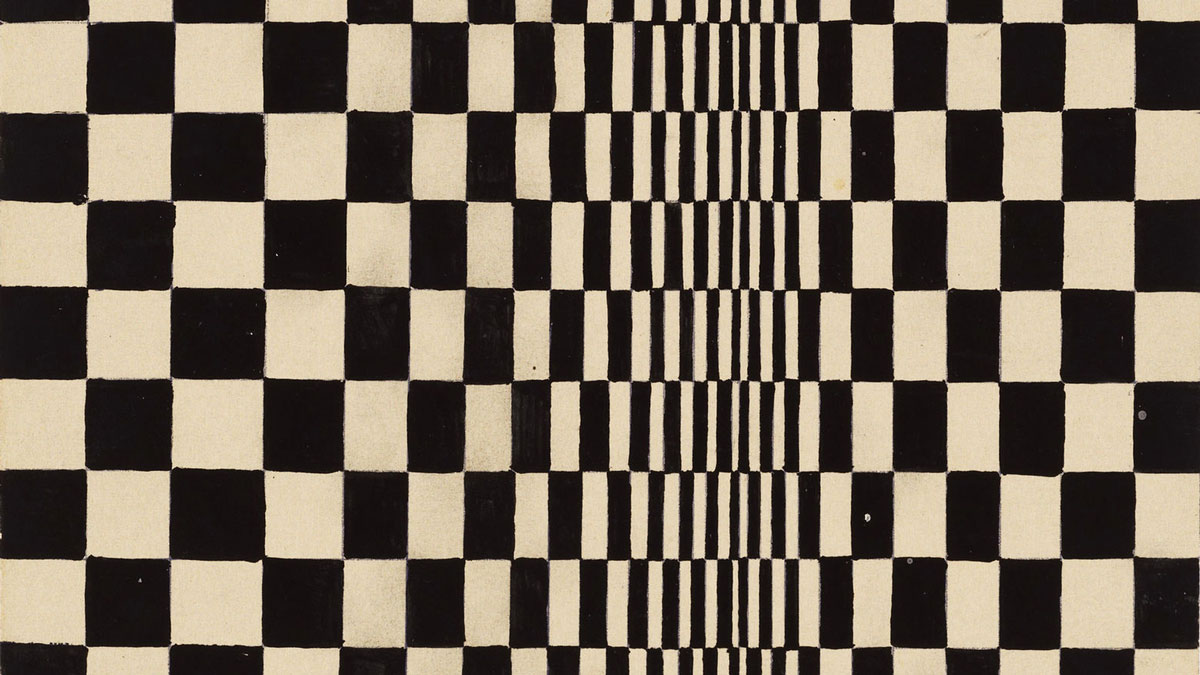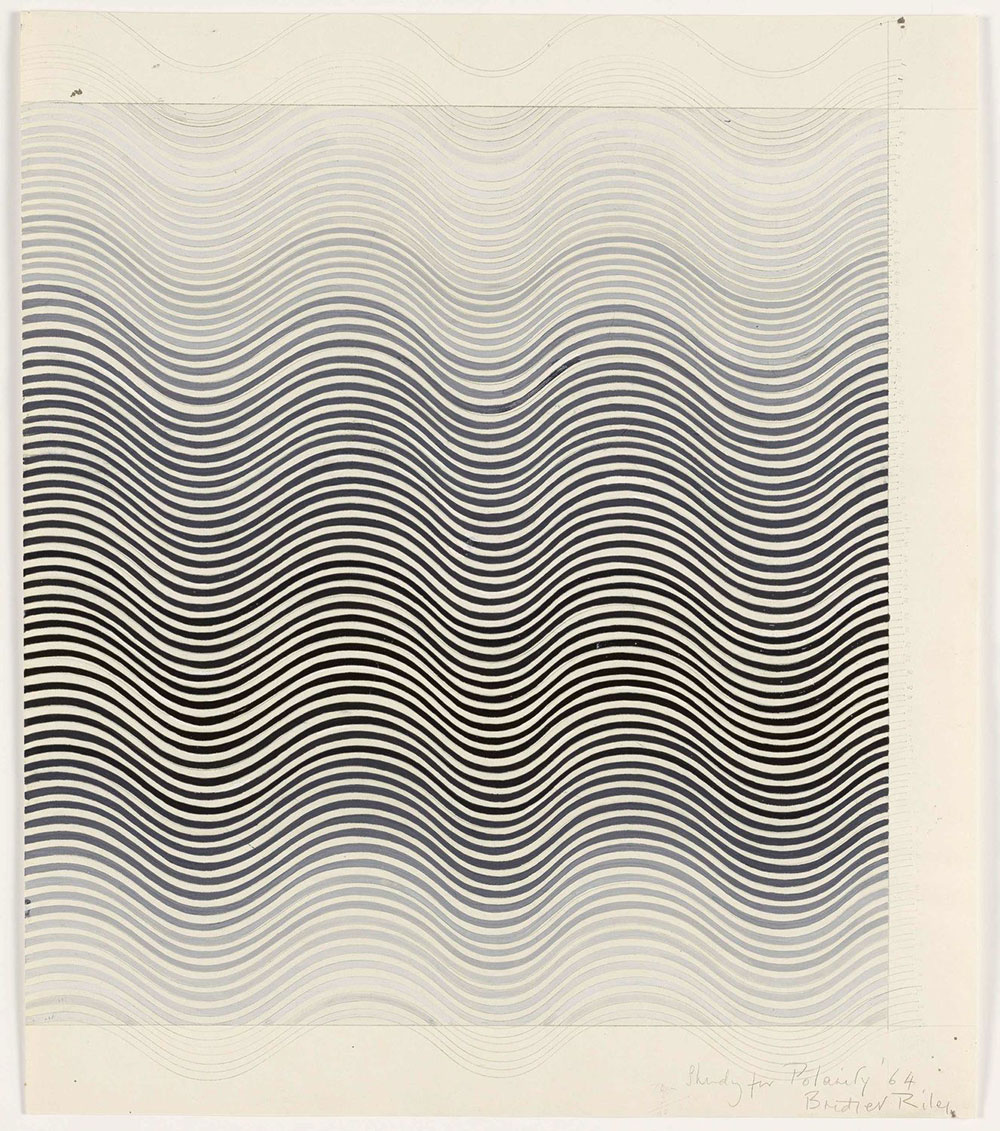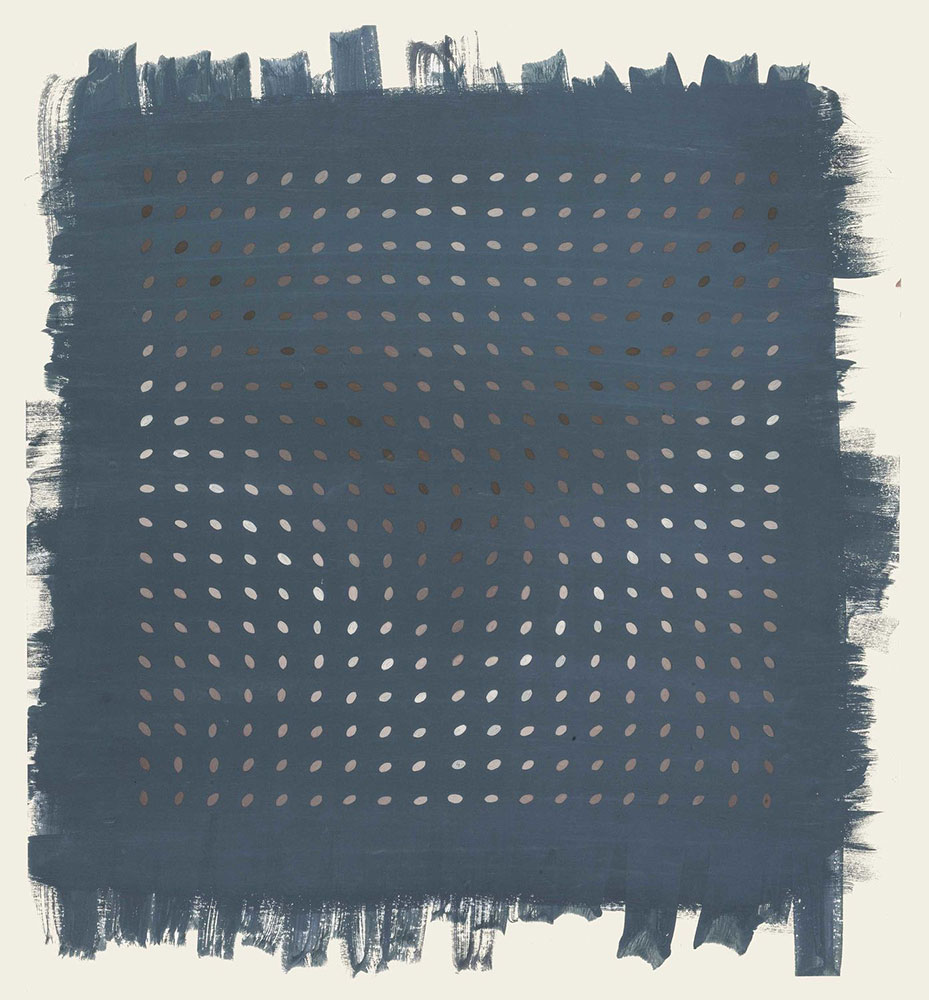PRESENTATION: Bridget Riley-Drawings From the Artist’s Studio
 Bridget Riley may be best known for her analysis of optical phenomena in geometrical black and white paintings that define her starting point and made her one of the central figures in the Op art movement of the 60’s. In the stunning color work that followed, she continued her exploration of perception through the relationship between structure and color, always causing disorientation to the viewer’s eye, as her paintings seem to flicker, to pulsate and to convey an internal life.
Bridget Riley may be best known for her analysis of optical phenomena in geometrical black and white paintings that define her starting point and made her one of the central figures in the Op art movement of the 60’s. In the stunning color work that followed, she continued her exploration of perception through the relationship between structure and color, always causing disorientation to the viewer’s eye, as her paintings seem to flicker, to pulsate and to convey an internal life.
By Dimitris Lempesis
Photo: Hammer Museum Archive
Including more than 90 sheets from her private collection “Bridget Riley Drawings: From the Artist’s Studio” is the first and most extensive American museum exhibition dedicated exclusively to Bridget Riley’s drawings in over half a century. Drawing has remained a crucial part of Riley’s practice for more than six decades. The exhibition presents approximately ninety sheets and covers the full range of Riley’s career, from her student days in the late 1940s, when she dedicated herself exclusively to drawing courses at Goldsmiths College in London, through her groundbreaking black-and-white optical works of the early 1960s, to the innovative color studies she has undertaken from the late 1960s to the present day. It includes rough studies; line drawings; tonal studies; preliminary works with written notations, tape, bands, and cut-and-pasted shapes; and highly finished drawings that stand as independent works. The majority of the drawings come from the artist’s studio, where they are retained as foundational elements crucial to her practice and always available for reference and reconsideration. The selection of works on view allows us to consider Riley’s practice from its earliest beginnings to the first decade of this century. Riley’s early student drawings made in the 1950s drew inspiration from the human form and nature to establish the foundation for her investigation of pure abstraction. In 1960 Riley moved abruptly from making representational drawings to creating purely abstract sheets that depict meticulously composed geometric forms in black and white. Although it marked a stark departure from her early figurative and landscape work, this new direction was in fact a solution to Riley’s earlier efforts to find a pictorial structure equivalent to vision itself. These studies range from working drawings on graph paper to finished gouaches and serve to anticipate her paintings. The drawings, along with a small selection of paintings, reflect what Riley considers an essential part of her, and any, artistic practice. She has described the process of drawing “as though there is an eye at the end of my pencil, which tries, independently of my general-purpose eye, to penetrate a kind of obscuring veil or thickness”. In the late 1960s Riley shifted from employing exclusively black, white, and gray circles, squares, and triangles to include color in her energetic horizontal and vertical compositions. Her aim was to investigate visual perception and light effects through the adjacent placement of hues. In her stripes, whether horizontal, vertical, diagonal, or curved, Riley uses color to guide our optical sensations. Line, in her words, is “the basis of what you might call a color vocabulary, as Seurat used the dot”. Beginning in the mid-1970s, Riley explored an expanded range of color for her stripes.
Bridget Riley spent her childhood in Cornwall and attended Goldsmiths College (1949–52; now part of the University of London) and the Royal College of Art (1952–55; B.A.). Until 1960 she painted primarily impressionistic landscapes and figures. Her study of the Pointillists, particularly Georges Seurat, led her to experiment with color juxtaposition and optical effects, and under the influence of Victor Vasarely and others, her work took on a geometric abstraction, in which intricate patterns of black and white and, later, alternating colors were calculated to produce illusions of movement and topography. In 1965 she participated with Vasarely, Yaacov Agam, and others in a noteworthy international exhibition entitled “The Responsive Eye” at the Museum of Modern Art (MoMA) in New York City. She won a first prize for painting at the Venice Biennale in 1968. Her notable works from this period included “Drift No. 2” (1966) and “Nineteen Greys” (1968). Riley’s experiments with optical illusions continued throughout her career. In 1967 she introduced color into her work, making her first stripe paintings. She sometimes broke from geometric forms in the 1970s to create what she termed curve paintings, in which waving lines give the impression of undulating movement. Notable examples include “Gala” (1974) and “Entice 2” (1974). In the 1980s Riley introduced diagonal lines, creating a series she called rhomboid paintings. She also began to adapt her palette to match the pigments she saw on her travels to such countries as Egypt and India. Her work from the 21st century took on a more lyrical quality, its forms inspired by the arabesque, as in Rajasthan (2012). Riley also received a number of commissions for wall murals, a practice she began with the design for the Royal Liverpool Hospital in 1983. Such pieces include “Bolt of Colour” (2017), a temporary work for the Chinati Foundation, Marfa, Texas, and “Messengers” (2019), a permanent installation at the National Gallery, London.
Photo: Bridget Riley, study for Movement in Squares (Detail), 1961. Gouache on card. 6 ½ × 6 ¾ in. (16.5 × 17.2 cm). Collection of the artist, © Bridget Riley
Info: Curators: Cynthia Burlingham, Jay A. Clarke and Rachel Federman, Hammer Museum, 10899 Wilshire Blvd, Los Angeles, CA, USA, Duration: 5/2-28/5/2023, Days & Hours: Tue-Sun 11:00-18:00, https://hammer.ucla.edu/




Right: Bridget Riley, study for Movement in Squares, 1961. Gouache on card. 6 ½ × 6 ¾ in. (16.5 × 17.2 cm). Collection of the artist, © Bridget Riley
